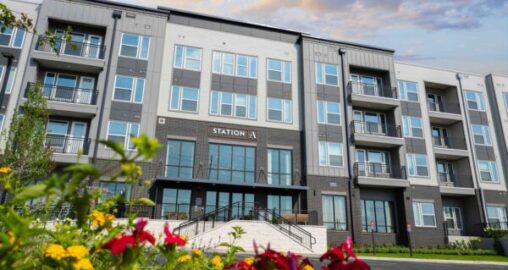There’s Amazon and Then There’s Everyone Else in Industrial
On pace to absorb nearly 120 million square feet of space a year, the e-commerce giant can’t help but make an impact on CRE.
September 7, 2021 | Erik Sherman | GlobeSt.com
 Of the ten largest industrial projects underway in the US this year, Amazon accounts for eight of them, with a total footprint of 28.3 million square feet—an area about the size of New York City’s Central Park, according to CommercialEdge.
Of the ten largest industrial projects underway in the US this year, Amazon accounts for eight of them, with a total footprint of 28.3 million square feet—an area about the size of New York City’s Central Park, according to CommercialEdge.
At the same time, investment sales prices are on a steady climb for industrial products, averaging roughly, as of June 2021, $94 per square foot. Unless Amazon is a tenant. In that case—and since the beginning of last year, buildings with Amazon as a tenant accounted for 7% of all sales volume—investors will gladly pay a premium for the asset, according to CommercialEdge, of $145 per square foot.
Developers have taken notice of the activity.
“All of a sudden, these developers are buying industrial land and building,” says Aviva Sonenreich, head of the office and senior broker at Sonenreich & Co., which owns and operates warehouses in Denver. “National developers are fighting for these build-to-suit spaces. They can’t build fast enough for Amazon and other companies like Amazon.”
It is not easy to overstate the footprint that Amazon, which did not respond to a request for an interview, has in the commercial real estate industry. So much so, that it is easy to forget that Amazon’s main business focus is elsewhere. Volumes have been written about its sophisticated business model and in many cases, the story of its real estate holdings is left out. That is understandable if you are buying cloud computing power from it or using it as a platform for sales. But for CRE, it has become essential to monitor all aspects of Amazon’s operations in order to stay on top of its real estate needs. And its real estate needs are immense.











